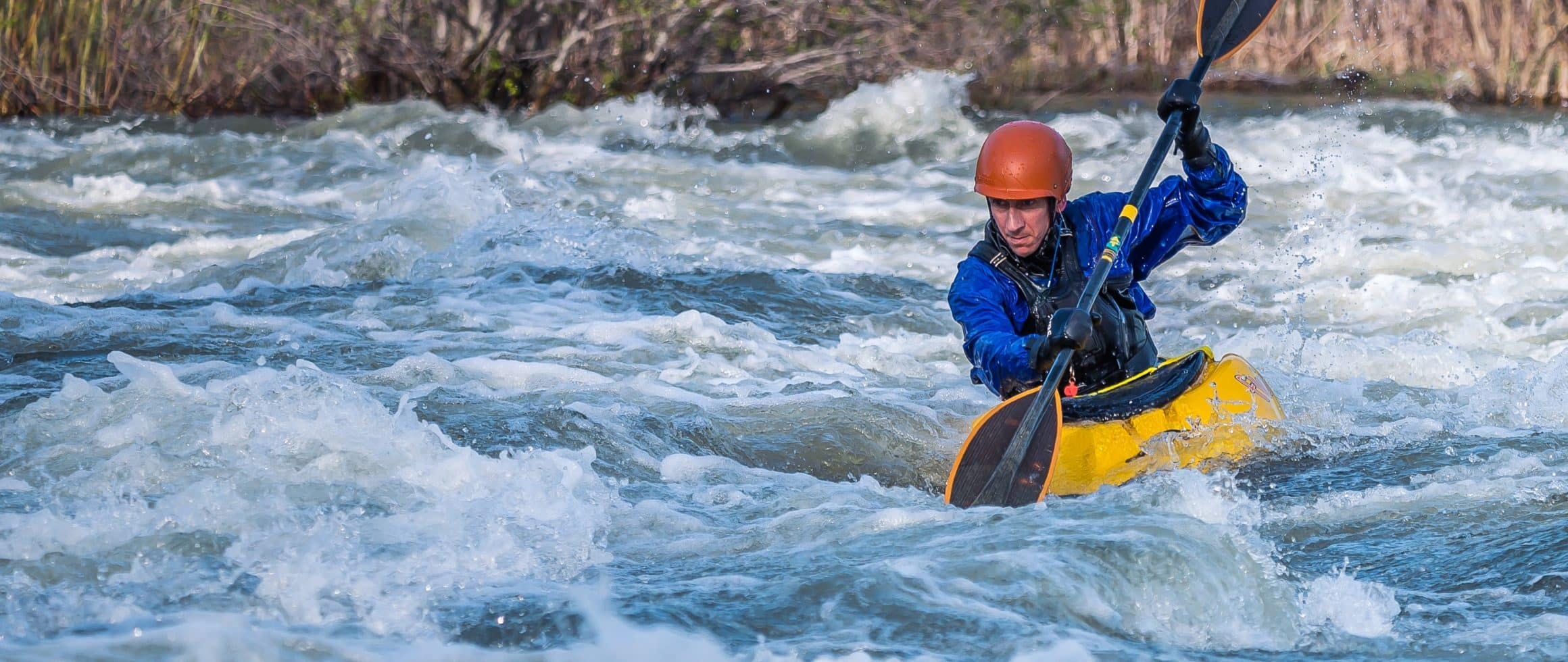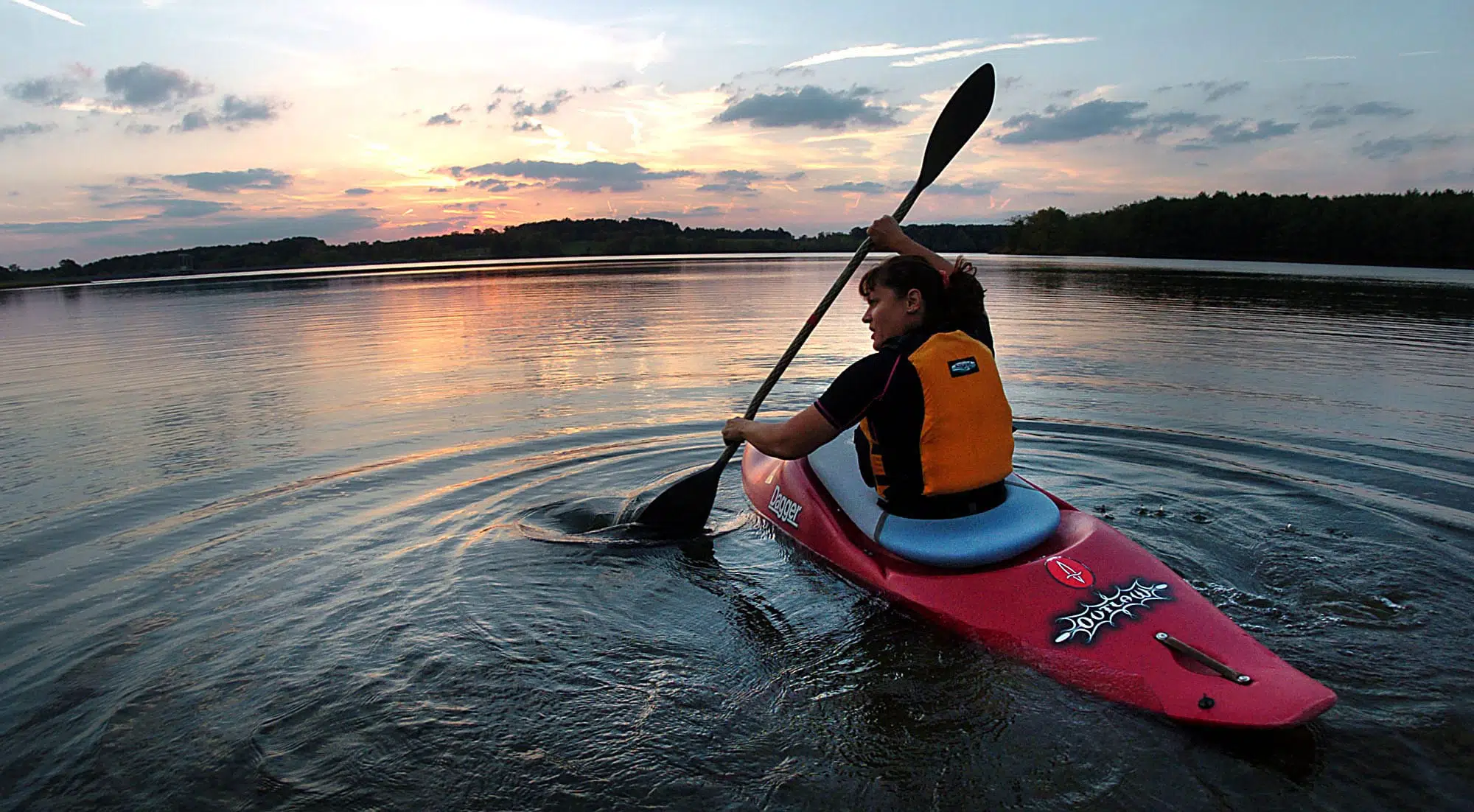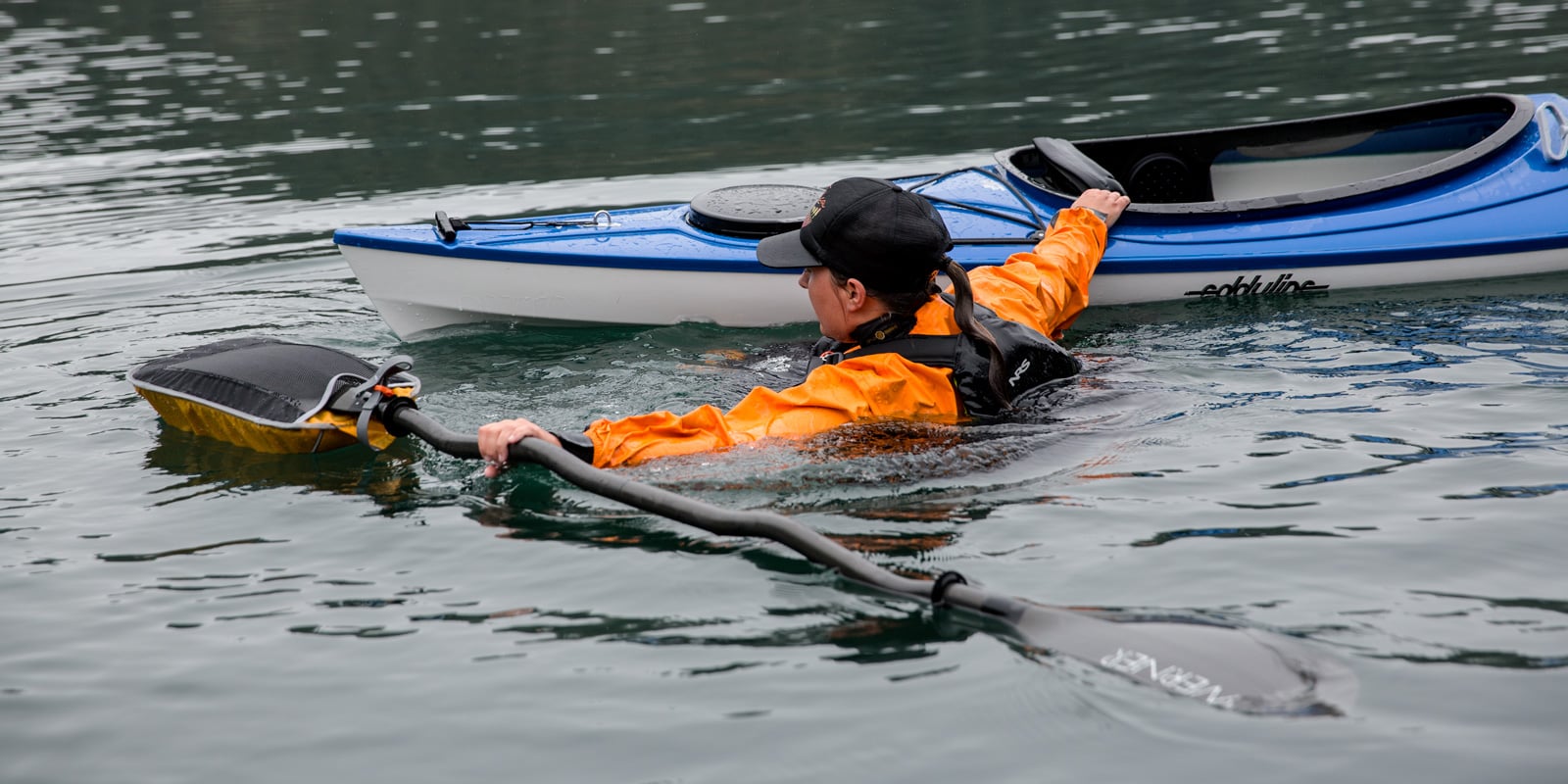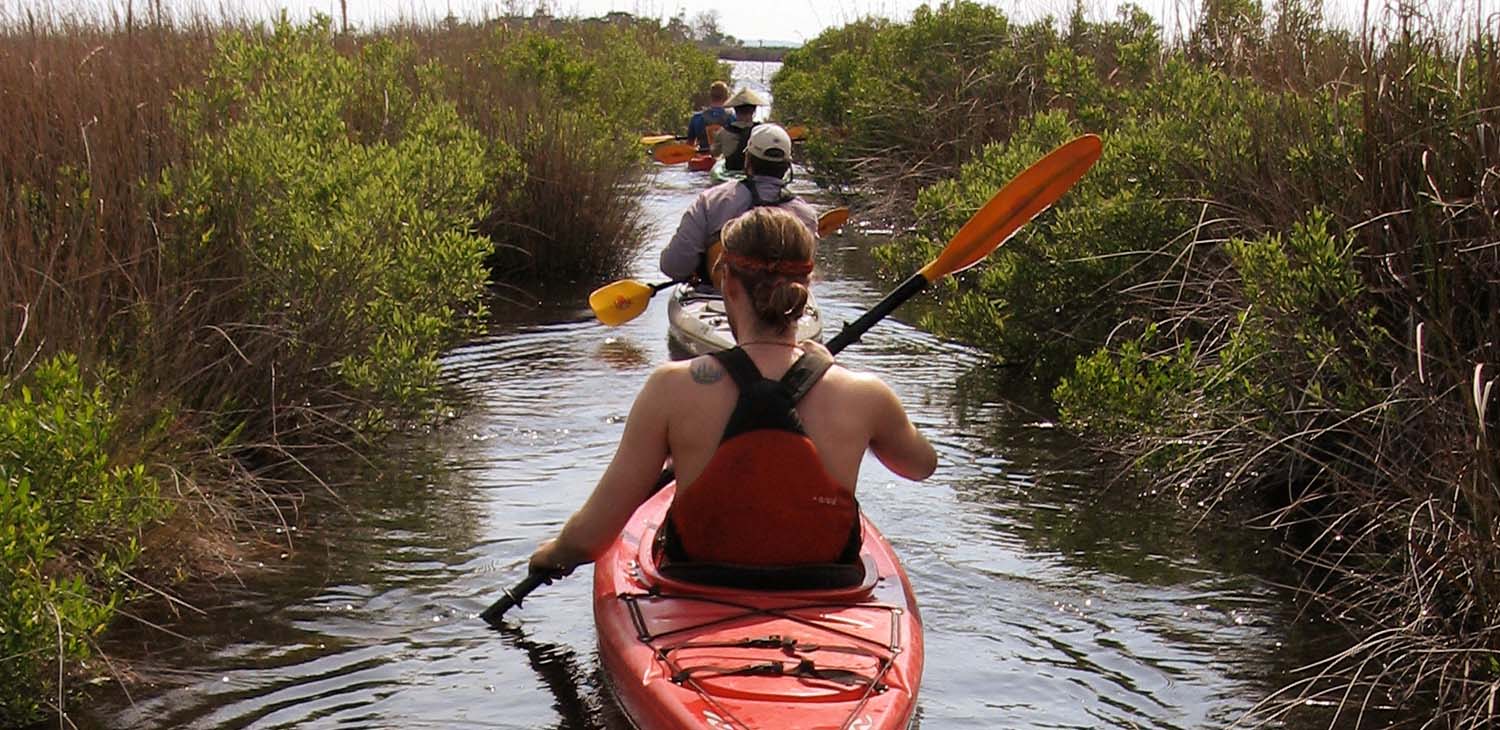
- Alabama
- Alaska
- Arizona
- Arkansas
- California
- Colorado
- Connecticut
- Delaware
- Florida
- Georgia
- Hawaii
- Idaho
- Illinois
- Indiana
- Iowa
- Kansas
- Kentucky
- Louisiana
- Maine
- Maryland
- Massachusetts
- Michigan
- Minnesota
- Mississippi
- Missouri
- Montana
- Nebraska
- Nevada
- New Hampshire
- New Jersey
- New Mexico
- New York
- North Carolina
- North Dakota
- Ohio
- Oklahoma
- Oregon
- Pennsylvania
- Rhode Island
- South Carolina
- South Dakota
- Tennessee
- Texas
- Utah
- Vermont
- Virginia
- Washington
- West Virginia
- Wisconsin
- Wyoming
How Do You Kayak Through Rapids?
How Do You Kayak Through Rapids?
White water kayaking is one of the most enjoyable ways to spend time in the great outdoors, and few activities can compare to it.
However, white water kayaking is a complex activity requiring a high degree of skill and experience to mitigate risks while on the river effectively. When you start paddling white water, one of the most crucial skills to acquire is manoeuvring your kayak through rapids, which is one of the many skills required to paddle white water. But first you need to know how do you kayak through rapids.
Learn the theory behind how to kayak in rapids before you undertake your first river descent. Even though there's no alternative to time spent on the water and professional training, studying the theory behind how to kayak in rapids is crucial. Here is a brief introduction to the fundamentals of paddling down a river in a kayak to get you started.
How Do You Kayak Through Rapids?
The Fundamentals Of White Water Kayaking, Along With Important Safety Reminders
We must go over some of the fundamentals of white water kayaking before we talk about how to kayak over rapids.
Anyone interested in paddling rapids should be aware, first and foremost, that there is a wide range of difficulty levels associated with rapids. A rating system that the American Whitewater Association devised is used to classify rapids according to the degree of difficulty that they present (AWA).
Several factors go into determining the classification of rapids, but here is a summary of the system in a nutshell:
Class I water is water that is moving instead of quickly and only contains a few ripples or waves. Paddling is not overly strenuous and presents little to no danger to kayakers.
Class II water is characterized by a moderate amount of current, a few waves of medium size, and a few rocks. Typically, there is adequate width, and the navigational channels are unobstructed.
Class III Paddling on a river of this class is considered intermediate, and the waves are significantly larger. There may be enormous hidden obstructions, filters, and relatively strong currents, and there is just a marginal possibility of suffering severe harm.
Class IV water is challenging, consisting of challenging rapids, massive holes, filters, and other obstacles such as high waves. Using stealthy scouting is strongly encouraged, and rolling skills are essential.
Class V white water is considered the most challenging level and features huge rapids that cannot be avoided. Only paddlers with prior experience should attempt this, and swimming poses a significant danger of harm.
Exploratory terrain with challenging circumstances is classified as
Class VI. It is necessary to have highly experienced rescuers on standby as well as excellent paddling skills.
Whitewater Kayaking: The Basics & Safety Notes
The white water categorization system is helpful for kayakers because it helps them gauge the potential dangers of paddling a given stretch of river.
If you're just starting out in white water paddling, it's best to stick to Class I and II rivers until you're comfortable with reading and navigating rapids. You might move on to Class III territory to further hone your abilities if you've accumulated sufficient experience and self-assurance.
And remember that white water kayaking is inherently dangerous. Class I and II waters pose a minor threat of injury to paddlers, although accidents do happen. Rivers of Class III or above provide a significantly greater danger of injury and should be cautiously approached.
Therefore, during white water paddling, paddlers must use safety gear such as a PFD and helmet. When learning the basics of river rescue, it is best to do it in a group and after taking a course in white water rescue. If you want to become better at what you do, you need formal training. When in doubt, play it safe. You can count on the river to be there tomorrow.
River Rapids: A Guide To Reading It
The ability to read river rapids is a core talent essential for any white water paddler. It will be tricky for you to navigate across rugged terrain if you do not have a well-developed ability to read the river. Your ability to read a river will play a key influence in determining how well you can navigate massive rapids, even if it isn't as much of an issue on rivers with less severe consequences.
As you continue your training to read rivers, we will go over a few essential points you should keep in mind throughout this course. Rapids of Class I, II, and III can be navigated successfully without first reading the river by experienced paddlers.
However, as a white water kayaker just starting out, you must take as many breaks as possible to read rivers. Stopping to scout a river whenever possible, even if it seems like overkill, helps you refine and fine-tune your skills for when you start to confront more major terrain in the future. This is true even if stopping seems like overkill.
What Exactly Is The Rapid?
Understanding what rapids are and how they develop is the first step in acquiring the skills necessary to kayak through rapids.
To put it another way, rapid results from water moving at a high rate and flowing down an incline at a sharp angle. The larger the quick, both in terms of width and height, the faster the water and the steeper the gradient.
Essential Kayak
There are various other elements at play when one creates a rapid. Rapids can also be caused by other factors, such as channels that are too narrow or impediments in the water. Rapid development in a river can be encouraged by debris in the shape of boulders, trees, and other objects. Even if they don't, they're still significant roadblocks that you'll need to be able to recognize on the spot and steer clear of wherever possible.
Essential Aspects Of The Quick
There are many distinct sorts of rapids to be found out there. Some are no more than a modest waves, while others are torrents of water pouring down the mountainside. To successfully navigate these distinct types of rapids, you must first get familiar with the many characteristics you must keep an eye out for a while you paddle.
When analysing a river, some of the most essential characteristics you'll look for are as follows:
The downstream V, sometimes referred to as the tongue, is often your closest buddy when you're out on the river. It seems like a constant flow of water suddenly emerges further downstream between two rocks or some other obstructions. If you follow the V pointing downstream, you should have a leisurely trip down the water.
Upstream V: On the water, the downstream V makes a pleasant appearance; however, the upstream V is not quite as welcoming. When water dashes around a rock, the result is the formation of an upstream V. Therefore, it is essential to steer clear of upstream Vs. so that you do not end up blowing into a giant rock.
Eddies are pockets of relatively calm water that can form behind river obstructions and are referred to by that name. Eddies are areas of the river where the flow of water is reversed and begins to spiral back upstream. These are frequently fantastic locations to seek shelter from the river's flow so that you can explore the river or wait for your paddling companions.
Eddy Line: An eddy line is a line that forms at the point where an eddy joins the river. Eddy lines include on the borders of eddies. Because the water might be dragged in two different directions at this point, it is difficult to either enter the whirlpool or move past it. This is typically not a significant cause for concern on Class I and II rivers.
Horizon Line: If you look ahead on the river and notice a line extending to the horizon, you can generally anticipate that you are getting close to a significant drop or ledge. In these kinds of circumstances, and particularly in waters classified as Class III+ or above, it is often necessary to scout the downstream river to better look at the terrain that lies ahead before continuing.
In addition to the features, you will notice while reading about a river, you will also see various obstacles on the water. The vast majority of these obstacles are ones you should try to avoid at all costs. These are the following:
These waves are referred to as recirculating waves immediately downstream of a huge item. They occur whenever there is a consistent flow of water back over itself, and they are most common when there is a significant drop in the water level. It is best to practice steering clear of recirculating waves because of the potential threat. These are frequently referred to as holes, reversals, and stoppers.
eddyline
Standing Waves: A standing wave originates downstream of a submerged obstruction. Especially in regions where the river quickly narrows to a smaller width, you can frequently witness more than one of them. These have the potential to force swimmers below the surface of the water, although this effect is very dependent on the water's depth.
The waves that can be seen upstream of an obstruction, such as; rock, are referred to as buffer waves. They can alert you to the presence of potential roadblocks that you should try to avoid. Occasionally referred to as a pillow.
The term "strainer" refers to a large object, such as a tree branch, located in a river and allows water to pass through it. On the other hand, river strainers serve the same purpose as the filter in your kitchen: they prevent large objects, such as you and your kayak, from moving downstream. These pose a massive threat to anyone traveling down the river.
Whirlpools are locations in the river where the water whirls around and has a unique circulation, as their name suggests. Whirlpools are also well named. Whirlpools can be pretty hazardous, although most moderately sized ones can be navigated with a reasonable amount of ease. When the current is at its strongest, you should steer clear of the enormous whirlpools.
A dangerous river feature known as a siphon is created when water runs under a massive rock in the riverbed. Although that water may easily travel through, kayakers typically aren't able to. Siphons may be concealed underwater; in this instance, the only way to identify them is to examine the water entering and leaving the rapid simultaneously. A siphon may be at work if the amount of outflow is significantly lower than the amount of inflow.
How To Make It Through The Rapids In A River
When attempting to effectively navigate river rapids, the most important thing is to choose a decent line and stay on it as much as possible. This is true regardless of the river you are on. The fundamentals of navigation you acquire on rivers with more moderate terrain will serve you well in the long term when you travel into waterways with a greater volume. However, this is easier to say than to do on rivers with a Class IV+ rating.
Here are 4 excellent strategies for navigating river rapids:
1. Stick To The V That's Facing Downstream
River running, in general, necessitates that you stick as closely as you can to the downstream V, which is true even if you're just on the river for a little bit of playboating.
Because we have already gone over what a downstream V is, we won't go over it again here and make the same point over and over. On the other hand, the concept here is that if you follow that tongue of smooth water that flows between two boulders or other obstructions, you will frequently have the most refined ride possible along with the current.
Locating the V in the downstream direction may be challenging when the water is particularly choppy. When you get to this point, scouting from your kayak or even reconnaissance from the shore can be helpful. When traveling downriver at a rapid pace on Class III or higher terrain, it can be challenging to discover a downstream V route when you are already moving so swiftly downstream. When it is required, do not be afraid to pause and conduct a search.
2. Consider Your Kayak's Angle
Generally, it is advisable to face waves head-on rather than from the side, and Bow-on is preferred. This is because catching a wave while sitting on the side of your kayak can cause the boat to capsize.
When the water is particularly turbulent, it may be hard to avoid any and all side contact with the waves. However, in otherwise certain regions, such as those with isolated locks or features, it is better to tackle these obstacles head-on.
When you need to navigate around several obstacles in the water with your kayak, kayak angle is another factor that comes into play in the circumstances like this. The angle at which your boat is positioned about the direction the current is moving or the fall line is quite important.
Angle
When the downstream V seeks to force you into a hazard like a rock, it is essential to pay attention to this since it could have serious consequences. If this occurs, you may need to adjust the angle of your boat so that the bow does not point straight into the path of the moving water.
For instance, turning the bow of your kayak so that it points in the direction you want to go might make it much simpler for you to avoid obstructions further downstream, even if the river is trying to pull you in the opposite direction.
3. Proceed With Caution
According to a well-known proverb, "slow is smooth and smooth is fast." These are wise phrases to remember when kayaking through white water.
The speed of your kayak compared to the rate of the river should not be extremely high when you are white water paddling because white water boating involves paddling down fast-moving water. This is because more incredible speeds on the water might make it more challenging for you to manoeuvre past a barrier.
Instead, you should try to approach the rapids at a speed that is not too fast. It will be much simpler to steer your kayak concerning the water's current when you do this. If you don't avoid it, the rapid will toss you around, and you won't have much chance to control where you go as you float downstream.
On the river, there are some situations in which you will need to build up a little speed to navigate through small to medium-sized obstructions successfully; however, this is not typically one of those situations. On the river, you need to move slowly to move quickly.
4. Become An Expert In The Boof
Every aspiring white water paddler must master the Boof stroke to succeed in the sport. In its most basic form, Boofing refers to the process of preventing the bow of your kayak from becoming submerged in water. Boofing helps navigate steep drops and waterfalls, but it is also useful when navigating other significant barriers.
It is important to remember that Boofing can be risky on huge rapids and drops if it is not performed correctly. Before attempting it on your own, you should be sure to practice this technique first under the direction of an experienced paddler.
Boofing
Because it carries the potential for so much harm, Boofing is one of those skills that you truly can't acquire without first gaining some practical experience. The theory will be covered here, but nothing can replace actual practice and the guidance of an experienced instructor.
In light of this, the Boof stroke is characterized by the fact that it is a forceful stroke typically performed at the peak of a fast. It does this by altering the angle of attack that your kayak takes, which is designed to prevent the bow from being washed downstream.
You can keep your boat angle and avoid getting swamped if you execute a boof stroke on the downstream side of your kayak at the very top of a rapid. This will allow you to propel yourself through the water. However, this is a more advanced skill you may work up to as you acquire more expertise navigating rivers. You can work your way up to this level over time.
Happy Paddling!
Paddling in white water in a kayak is among the most exhilarating forms of paddling. Spending time on the river is always well spent, whether you're learning how to expertly navigate your way through difficulties or simply revelling in the pure delight of cruising your way down a long river run.
You should now have a solid understanding of how to kayak in rapids as a result of reading this article. Keep in mind. However, that theory is only one component of the whole equation. Make it a point to spend some time in nature and on the water, preferably with a seasoned paddler by your side.
Beginning on rivers with relatively modest rapids and moving upstream as your skills and confidence improve is the best way to tackle white water. Your ability to read rivers will improve with time, allowing you to navigate more challenging terrain as your experience grows. Have fun out there on the water!
Frequently Asked Questions
Is there a Class 6 rapid in the United States?
The Niagara Gorge is an exploratory Class VI rapids section currently off-limits to paddlers. Rapids can reach speeds of more than 20 mph, making them some of the most extreme in the world.
What is the highest class of rapids?
Rapids are classified as follows by the International Rating system: Class A - Lake water. Still. Class I - Easy. Class II - Moderate. Class III - Moderately difficult. Class IV - Difficult. Class V - Extremely difficult. Class VI - Extraordinarily difficult.
Is it possible to kayak the Grand River in Grand Rapids?
Experience a 2-hour guided kayak adventure down the Grand River from Riverside Park to Canal Park. With beautiful scenery, views from downtown Grand Rapids and various recreational activities, the Grand River is Michigan's longest river. The trips will last between 1 hour and 45 minutes and 2 hours.
Is it possible to do Class 4 rapids as a beginner?
Several requirements must be met before rafting Class 4 rapids for the first time. Depending on the river and company, the minimum age to raft Class 4 rivers is 12-14. Most Class 4s recommend you be in good physical condition, adventurous, and able to swim.
How scary are Class 4 rapids?
Class 4: Whitewater, medium waves, rocks, a substantial drop, and sharp maneuvers may be necessary. Without experience, this level should not be attempted. Under 16-year-olds should not participate in this level.



![Can You Kayak While Pregnant? [Updated 2026]](https://shared-bucket-websites.s3.amazonaws.com/HowtoSurfWhilePregnant-1655756453379)







